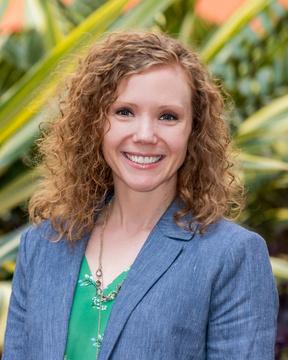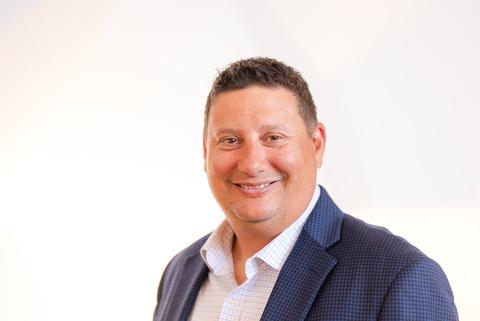
7 minute read
Industry Update: Supplemental Medical Claims
By Heather & Trevor Garbers
At Voluntary Advantage, we are deeply committed to supplemental health claims. To be clear, our focus is on innovating the entire member experience, which naturally centers on the claims process. We offer these policies to employees so that, in the event of an unexpected health issue, they receive a benefit to help cover the cost of treatment and remain financially stable. We present these plans to clients as a way to support both the physical, mental and financial wellness of employees, filling gaps in coverage and reducing barriers to care. In today’s landscape, we are all well aware that out-of-pocket healthcare costs and surprise medical bills can be financially overwhelming, potentially preventing employees from accessing necessary care or forcing them to make healthcare choices based on cost instead of outcomes.
So the claims process is important.
Claim integration is important.
Promoting utilization of these plans to do exactly what they were sold to do, without an undue burden on the member is important.
The cheapest plan or the one that offers the best bundle discount or subsidy is great, until the value to the member is diminished due to a cumbersome claims process or denied claim
We are checking in on the industry to see where we are with the claims process today and Kyleen Engelstad, Director of Claims Strategy, at Voya Financial, and Paul Hummel, Vice President, Voluntary Benefits Practice Lead at UnitedHealthcare Specialty Benefits, were happy to share their insights.
When it comes to the claims process today and members’ preferred method of filing claims, Kyleen shares that “in today's increasingly digital world, and as the workforce continues to adapt to evolving technologies, we are witnessing an ongoing shift toward digital claim submissions. The future is already here, as the majority of claims are now filed digitally rather than on paper. According to Voya’s data from Q3 2024, less than 2% of our supplemental health claims were submitted via paper, whether through email, fax, or mail.”
Claim integration is a hot topic in the industry and we are seeing broad use of the term to describe everything from a “claim notification”, where the member receives a notification via email or mail that they have a potential claim they can file, to “claim auto-adjudication”, referring to the carrier automatically filing the claim for the member with the data they have in-house.
We are curious what data carriers are using for claim integration today and what impact claim integration is having on the experience for the member and utilization rates. According to Paul, “We are using medical data, and we have had a significant impact; however, just because medical data is available to a carrier, does not mean there will be a significant impact. What a carrier does with the data determines how much claim impact is recognized."
Kyleen shares that “The majority of our claim integration data is sourced directly from the employer’s medical carriers for our medical claims integration clients. For our product-to-product integrations, we rely on the information submitted by claimants with their initial claim submission. Product-to-product integrations cover a larger percentage of our block of business currently and drive impact for more, when applicable. While our medical claims integrations are also showing positive results, we are continuously exploring ways to enhance this impact.”
Another key consideration when we talk about claim integration is that this strategy typically includes the sharing of external health insurance claims data, which obviously can raise some compliance and data privacy concerns. On this topic, Kyleen states that “we find that most of our clients are open to sharing medical claims data to proactively identify potential claims for their employees enrolled in supplemental health benefits. Historically, clients who have been hesitant to share this data often view these benefits as separate from their core benefit programs, considering them optional addons funded by employees' own paycheck dollars. However, as the industry has evolved, there is a growing recognition of the value these benefits bring to the overall employee benefit package, leading to increased willingness to integrate and share medical claims data when managed to safeguard that information”.
To give credit where credit is due, our industry has come a long way in the claim process – but it still has room for improvement for a seamless member experience. Kyleen shares some recommendations for how to increase claim utilization, “At Voya we are focused on deploying a multi-faceted approach as one-size does not fit all. For instance, claims integration is a great approach, but it doesn’t always apply to all enrolled employees, and they still may not understand their benefits even when it does apply and work for them. Engaging employees throughout the year with communication and education about what they have enrolled in is critical.
Enrollment season can be overwhelming for employees, so there are likely to be better outcomes when education and reminders are sprinkled in throughout the year in bite size nuggets. This is evident as our research has found that about two-thirds of employees (65%) are open to receiving information about their benefits from their employer outside of open enrollment to help them better understand their benefits.”
She adds, “in addition, our statistics from a journey campaign conducted with 22 supplemental health clients in 2024 indicates that after just two of the quarterly e-mails, we saw around 746 claims filed, the majority of which were core benefit claims (non-wellness), totaling $766k in claim payments. All of this to say, I believe that increasing claims utilization will always involve multiple tools that we keep evolving for our customers, but it will always be very important that employees understand their benefits to fully appreciate their value and peace of mind they provide”.
We asked Kyleen to leave us with some predictions for what the future holds for Voluntary Benefit claims, and she states that “the future of voluntary benefit claims will likely involve a collaborative effort within the industry, to ensure employees who enroll in these valuable benefits receive the support they need. It will remain essential to find the right balance between keeping benefits affordable, paying meaningful claims to employees, and managing broker commissions. Additionally, we will need to reassess the role of implementation credits and tech credits, as their ability to be paid may decrease if carriers are consistently meeting the expected claims payouts to employees”.
UHC, Voya and Nayya are some of the stakeholders driving innovation in the industry with a focus on enhancing the claim process for members. To keep up with our evolving customer, we can all push the industry to make this a priority by driving market awareness of the different types of claim integration and their impact. Education is key, and the claim process and resources to drive utilization should also be a key point of discussion when educating clients on options available in the market.

Kyleen Engelstad, Director of Claims Strategy, Voya Financial - Kyleen has been in the insurance industry for more than 20 years. The majority of her experience has been heavily focused in voluntary benefits. She is currently the Director of Claims Strategy at Voya Financial, joining the Voya team in September 2022.

Paul Hummel, Vice President, Voluntary Benefits Practice Lead, UHC - Paul leads United Healthcare’s Voluntary Benefit Practice where he is accountable for the growth of the supplemental health practice. Prior to UHC, Paul spent 20 years at Trion/MMA, a consultant outside of Philadelphia, PA. During the last 10 years of his tenure at Trion, Paul led the Voluntary Benefit Practice where he grew the practice into a nationally recognized program.









